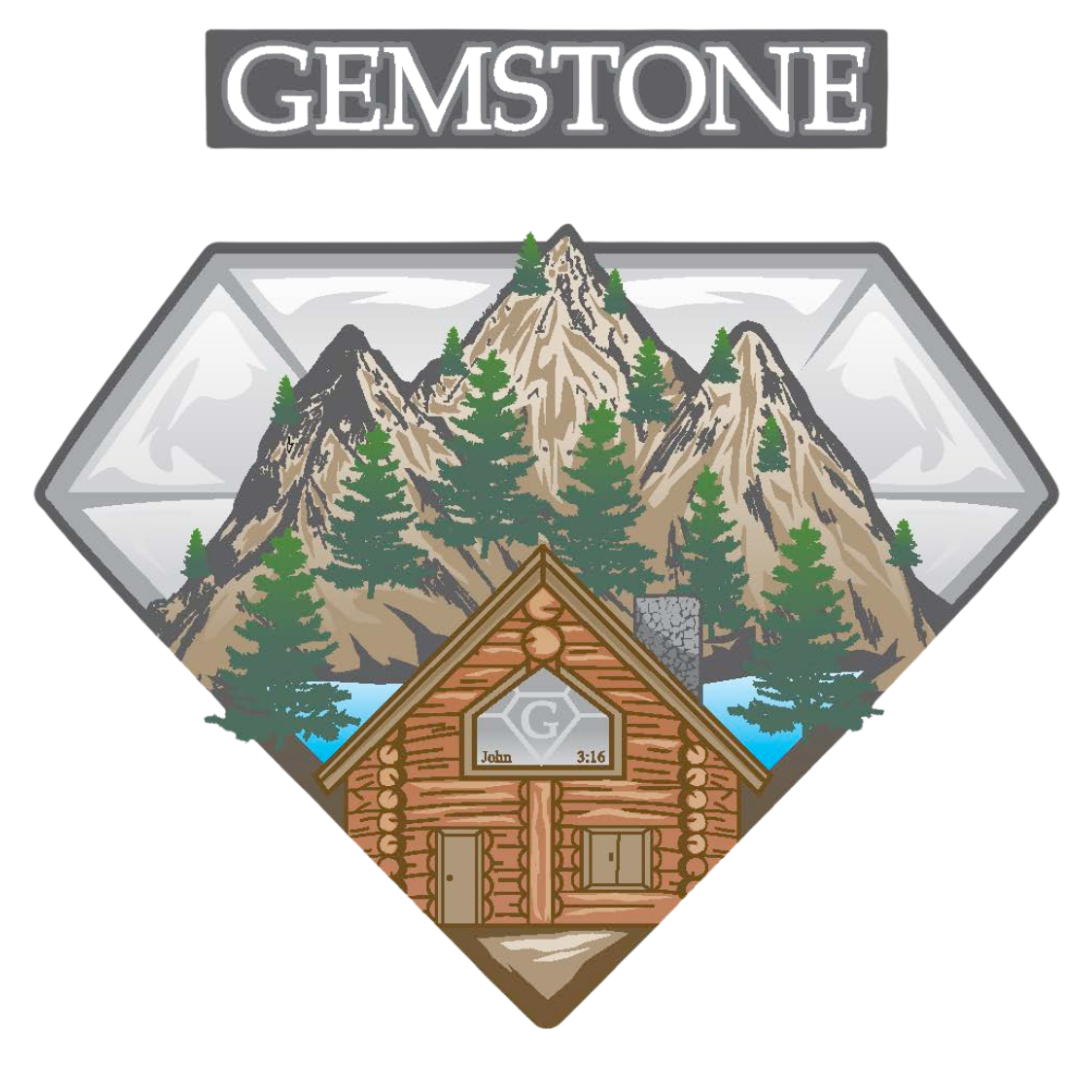GemStone Construction Blog
Breaking Ground: Sacramento Log Cabin Lot Prep
August 1, 2025 | Sacramento, CA USA

Building a log home starts long before cedar beams roll in—it starts with the dirt. Good log cabin site prep lets concrete trucks glide in, keeps inspectors smiling, and blocks winter puddles from splashing log walls. Gemstone Construction handles each shovel, permit, and neighbor handshake, turning raw foothill ground into a pad that’s ready for walls, decks, and sunrise coffee.
Solid prep also protects budgets. A smart driveway saves towing fees, early soil tests kill surprise change orders, and tidy erosion nets keep wildfire inspectors nodding yes. Follow the chain below—every step feeds the next—so you’ll see how “stage one” work makes the whole build smoother.
Walk the Lot, Catch the Clues
Sacramento mornings start cool, so our crew makes a sunrise lap with bright ribbon and strong coffee. We watch where fog lingers, where breeze slips through pines, and which ridge frames the valley view. Pink ribbons tag porch corners; blue marks drive paths; green highlights shady hammock turf. An afternoon lap repeats the loop when heat shifts shadows. Those two strolls create a living sketch more honest than any satellite app.
Back at the tailgate we spread a color printout from the USDA Web Soil Survey, which labels each pocket clay loam, sandy loam, or hardpan. One coffee-can water test in every color block proves whether the map is right. If a hole drains slow, we pencil in footing drains now, not after framing. When water vanishes fast, we earmark quick hydro-seed so winds don’t steal topsoil.
Slope & Soil in Plain Talk
Roll a soccer ball across the clearing. If it coasts ten paces and stops, the grade will shed rain yet welcome cement trucks. If it rockets downhill, we carve an easy S-curve so loaded mixers don’t spin tires, and we bench the hillside with low stone steps that double as future walking paths. Those curves become the first fire-defensible lines, linking slope thinking to safety later.
Dirt texture guides budgets. Clay sticks like cookie dough and puffs when wet, so we top it with six inches of crushed gravel and lay pipe drains that exit downhill. Sandy ground crumbles like brown sugar—great drainage, poor grip—so we compact in thin lifts and spray rye seed the same day. Silty banks split the difference; they firm up with a day’s sunshine, so we time grading for dry spells. Different soils, different tricks, all simple enough you can feel them in your hand.
Selective Tree Work Sets the Stage
Northern California oaks give property personality, yet counties fine hard for cutting the wrong trunk. We wrap bright tape around heritage trees wider than a dinner plate, snap photos, and file a one-page removal form; approvals usually land within a week. Sawyers drop only what blocks house pads or fire clearance, leaving shade trees where lawn chairs will sit. Limbs feed the chipper, spraying mulch onto future paths and garden rows.
Straight pine logs never enter the structural frame—we buy kiln-dried timbers from certified mills—but they don’t head for the dump either. A partner sawmill swaps those trunks for porch-bench slabs or thick mantel blanks, trimming haul bills. Smaller rounds slice into “cookies” for rustic welcome signs, while chip bags line walking trails. Reusing site wood lowers costs and showcases the craft culture of custom log home builder Sacramento crews who hate waste as much as delays.
Turning Off-Cuts into Yard Perks
Three-foot rounds stack into fire-pit seats by the time framing crews arrive. Flat cookies sand smooth into table coasters stamped with the cabin’s move-in date. Slab off-cuts edge gravel drive curves, keeping rock in place during the first winter storm. Even sawdust finds a second life as chicken-coop bedding for a nearby hobby farm, earning neighbor goodwill that pays back when nail guns echo at dawn.
Mulch spread under drip lines locks moisture and chokes weeds, saving nursery runs. A single afternoon of chipping turns what could be smoke-choked burn piles into a soft pine-scented path kids will race along while crews set trusses. Little touches build big stories—future guests will hear how the bench they sit on once grew where the driveway now curves.
One Dig: Driveway, Power, Water & Data
Fire code treats driveways like rescue lanes. We grade fourteen feet of packed base rock, trim branches to fifteen feet, and crown the center two inches high so rain sheets off. When the lane runs longer than a football field, we add a fifteen-by-thirty turnout halfway up; that pad lets fuel trucks idle while crane rigs glide past and later becomes overflow parking.
Utility trenches slip under the drive before surfacing. Three PVC sleeves—power, fiber, and a spare—run side by side, each with a rope pull and capped ends. Wells drill now so the big rig parks close; if city water serves the lot, we drop a temp meter and frost-proof spigot by the pad. Crushed rock at the gate stops mud ruts in January and keeps county roads clean. Trench dirt then backfills low driveway shoulders, saving import fill.
Temp Service Hacks for Dry Summers
A 200-amp temporary pole stands beside the pad within days of grading. Scheduling SMUD or PG&E early beats the summer queue, so compressors, saws, and battery chargers hum without renting generators. The new well pump doubles as a dust hose, taming clay powders and cooling slab pours on triple-digit afternoons. That single pump saves water-truck rentals and keeps the concrete schedule tight.
At dusk the site glows from a pole-mounted light aimed down—not into neighbor windows—letting security cams watch gear while crews rest. Local sheriff deputies appreciate a lit site over a dark one, and insurance audits notice the detail. Power, water, and light working in week one shield the whole calendar from surprises.
Grade Once, Drain Forever
Our dozer shapes the pad like a pizza pan: high in the middle, two-percent fall in all directions. Yellow subsoil compacts under heavy rollers until a loaded water truck leaves almost no tire mark. Topsoil piles aside for vegetable beds, saving future nursery runs. Twin ankle-deep swales encircle the pad; the uphill channel snags hillside runoff, the downhill trench catches roof water and feeds a dry well. One graded pad, two drains, zero standing puddles.
Those earthworks also defend the driveway. Excess base rock from the lane lines the swales, stopping erosion and blending colors. By using spoils twice, we cut dump fees and carbon miles. The same drainage plan later mates with log-wall splash trenches, linking this earth-moving stage to moisture-control steps during framing. Prep isn’t a solo act; every move sets the stage for the next trade.
Raise the Pad, Slash Risk
Footings start at least a foot above finished grade on valley parcels, eighteen inches in creek dips. That extra lift blocks mud splash in February and leaves room for a stone skirt that bounces weed-trimmer cords instead of gouging log edges. Elevation also matters to insurers; pulling walls out of minor flood zones can trim premiums before move-in.
Wildfire maps reward height too. Ember showers lose momentum climbing bare concrete, buying firefighters minutes. The taller pad ties back to driveway crowns and clay drains; all parts mesh like gears. By the time logs arrive, the ground already works to protect them—no last-minute fixes, no sticker shock.
Permits, Inspectors & Neighbor Goodwill
Lot-prep paperwork often bundles grading, tree notes, and erosion blankets. Gemstone Construction emails one PDF with color maps on page one and signature lines filled. Clerks stamp faster when no blanks appear. While files circulate, our crew posts a roadside sign with job-site numbers and sweeps gravel off asphalt every Friday. Neighbors notice quiet evenings and clean streets, filing zero complaints.
Inspectors spot that respect on arrival. We hand them a laminated checklist—compaction report, culvert receipt, soil-map printout—and walk them straight to taped inspection points. Quick answers turn into quick stamps. Friendly groundwork here pays off later when footing steel and shear nailing need same-day approvals. Prep goodwill fuels build momentum.
NorCal Lot-Prep Q & A
What does complete lot prep cost near Sacramento?
Most wooded parcels under two acres run $8 000–$12 000 for selective clearing, stump grinding, pad grading, driveway base, and erosion blankets. Rocky slopes, heritage-tree mitigation, or long switchbacks can push totals up $4 000–$6 000. Gemstone Construction credits any millable pine or fir, shaving haul bills by roughly 10 %. County paperwork remains modest—Sacramento lists grading permits around $300—and we itemize those fees so they never ambush your spreadsheet. Seven to ten workdays covers saws, stumps, graders, rollers, and trench crews when weather behaves.
A smooth budget also counts on fuel and material prices. Diesel spikes add pennies per cubic yard of cut, which may sound small until a hillside pad moves 400 yards. By locking diesel with suppliers early and reusing onsite rock in swales, we buffer clients from gas-pump surprises. Detailed prep bids combine that price security with local vendor loyalty, keeping the overall project predictable.
Can I burn slash piles instead of hauling or chipping?
You can—but tight rules make burning a chore. Cal Fire and Air Quality issue permits only on approved “burn days,” and piles must cure thirty days, stay under shoulder-height, and sit fifty feet from any trees or siding. Two adults armed with hoses and rakes must babysit until the last ember dies. Fines for off-permit fires start at $1 000, and a rogue spark can spike insurance renewals for years.
Chipping turns limbs into mulch on the spot, avoids smoke, and costs about $450 a day—often cheaper than dump runs plus burn permits. That mulch then pads garden beds, locks moisture, and commodifies debris into landscaping gold. Clients breathe pine-scented air instead of ash, and neighbors thank you for clean skies. Gemstone’s chipper usually finishes a one-acre clearing in an afternoon, wrapping waste management in one tidy bow.
Do I need a separate permit for driveway culverts?
Yes—if the driveway crosses a county ditch or seasonal creek. Public Works checks for an eighteen-inch pipe, compacted gravel bedding, and rock riprap flares. A simple sketch and $150 fee usually secure approval within a week. Installing the culvert before heavy rigs arrive prevents rut repairs and calms inspectors who hate seeing muddy runoff on public lanes.
Done right, the same culvert channels roof water later, tying hydrology from driveway to house pad. One pipe solves two problems: safe vehicle access and clean drainage. Skipping the permit risks a red tag that halts concrete pours, derailing the calendar. A quick form now protects months of build time down the road.
Cost Check & Next Step
Smart dirt work lowers headaches from the first truck roll to the final coat of stain. Plug your cabin size, finish level, and optional add-ons into Gemstone Construction’s free cost calculator for a realistic starting budget, then contact us today to lock in a lot-prep date and start your log home journey on solid ground with Sacramento's preferred log home builders.
About Gemstone Construction
Gemstone Construction is a premier custom home and commercial building contractor serving Northern California, including the Sacramento area. Specializing in
custom log homes,
luxury home builds,
residential metal building construction, commercial construction and
commercial metal building construction. We bring craftsmanship, attention to detail, and personalized service to every project. From designing dream homes to building cutting-edge commercial spaces, our dedicated team ensures that each build reflects our clients' unique vision and exceeds expectations. Trust Gemstone Construction to transform your ideas into reality with integrity and excellence.
Learn more about Gemstone Construction

Contact Information


